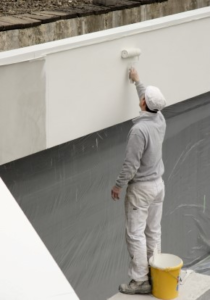Whether you’re selling your house or just want to freshen up your home, hiring professional painters can improve the overall look of your home. They offer a wide range of services and will save you time, money, and frustration.

The first step to finding a great painter is to get a quote from multiple companies. Ensure that the cost breakdown includes direct and indirect costs.
Getting your home painted can be one of the most transformative and cost-effective ways to refresh its appearance. However, the process isn’t without its challenges, including time, safety, and wall conditions. In addition, a poor paint job can result in costly repairs and corrections. It’s important to understand how these factors affect the costs of an interior paint job, so you can make a decision that suits your needs and budget.
In the first place, you should know that the price of a house painter will depend on several factors, including how much paint is needed, the amount of work to be done, and the condition of the walls and trim. For example, if your walls are heavily textured or damaged, it will take longer and require more supplies to complete the job. In addition, if you have to paint a ceiling or trim, it will also increase the price of the job.
Another factor that can influence the price is the type of finish you want. High-quality paints tend to be more expensive by the gallon, but they offer better coverage and durability. Typically, house painters will provide you with a detailed quote that includes the project scope and completion timeline along with labor and materials costs.
Many people assume that it is cheaper to do the painting themselves rather than hire a professional. This may be true, but hiring a professional saves you time and guarantees the quality of the finish. Professionals use their tools daily and have spent years perfecting their skills, whereas amateurs will often make mistakes that can lead to costly corrections or repairs.
Aside from saving you time, a professional will ensure that the job is done correctly the first time. This is crucial if you’re planning to sell your house in the future, as a poorly-done paint job can detract from the overall value of your property.
There are a few ways to find a house painter that’s affordable. One option is to research local painters online. Most have websites that list their services and prices. Some also have pictures of their previous work and customer testimonials. You can also contact paint suppliers in your area and ask them for a referral. Another option is to look for a company that offers both residential and commercial painting. These companies are generally a bit larger than the Mom-and-Pop businesses and are more likely to have valid insurance and customer references.
Time-saving
Painting your home is a big project and requires plenty of time and attention to detail. Professional house painters know how to efficiently work on projects, which means that they can complete your job in a fraction of the time it would take you to do it yourself.
When hiring a house painter, ask about their experience and how long they have been in business. This will help you choose the right person for your needs. Also, make sure they have the necessary licenses and permits required in your area. If they do not, you could be liable for any accidents that may occur during the project.
House painters have extensive knowledge of different surfaces and paints, and can offer valuable advice to their clients. They also use the best quality products to ensure their work lasts for years. This is especially important for outdoor projects, where water-resistant paints are essential to protect against the elements.
Experienced house painters are well-organized and can effectively manage their workflow to achieve the results that you want. Their knowledge of the latest trends in home painting helps them to create a look that will complement your furniture and decor. They can also suggest cost-effective options that will not compromise on quality or durability.
In addition to their expertise, house painters use a range of tools and equipment to improve productivity and quality. They can quickly clean and prep surfaces, which saves you a significant amount of time. They can also quickly and accurately apply paint using a wide range of techniques. This means that you will get an even coat of paint on your walls and woodwork, and a professional finish.
Aside from saving you time, professional house painters can also help you avoid costly mistakes that can damage the appearance of your home. They can advise you on the best paints for your project, as well as how to apply them properly. They can also recommend specific maintenance tips to minimise problems such as peeling or discolouration over time.
Most professional house painters will include two coats of paint in their price estimate. While a single coat of paint may look good, it will not hold up to moisture or weather. Having a second coat will provide protection and washability, and will keep your walls looking new for longer.
Durability
House painting is a great way to improve the look of your home and increase its value. Professional house painters are experienced and know how to create long-lasting, durable finishes. They can also help you select the best colors and styles for your property. In addition, they can give you tips on how to maintain your paint job over time.
Some house painters are one-man-shows, and they get most of their business from word of mouth or from friends’ referrals. They usually offer a low price, but may not have all the necessary equipment, such as large ladders or insurance. On the other hand, some paint companies are quite larger and take a more professional approach to their work. They will have valid insurance, customer testimonials and references, and they may also show pictures of some of their previous work.
A professional house painter can help you choose the right color, finish and paint for your home’s exterior and interior. They will also help you determine the appropriate amount of coats and apply it properly to ensure a lasting, beautiful result. They can also help you find the right tools for the job, such as brushes, rollers, nozzles and other specialty supplies. They may even recommend a particular brand of paint that is suitable for your needs.
In addition to their painting expertise, professional house painters have excellent customer service skills. They can handle high stress situations and provide quality workmanship with a positive attitude. House painters typically work in indoor or outdoor environments, and are exposed to weather conditions, such as rain, wind and heat. In addition, they may be exposed to volatile organic compounds (VOCs) from paint products and cleaning solvents.
Hiring a professional house painter is a wise decision, especially in high-traffic areas or climates with extreme weather conditions. A fresh coat of paint can protect your home from the elements and make it more attractive to potential buyers. Moreover, it can also make your home more energy efficient and reduce your utility bills. It is also a good idea to repaint your home every few years to keep it looking nice and add value to your investment.
Safety
Whether it’s exterior or interior painting, the work of a house painter can be dangerous. This job involves the handling of hazardous materials, and a lot of equipment is needed to complete the project. It also requires a high level of physical strength and manual dexterity.
In addition, it’s essential to protect yourself from exposure to harmful chemicals by wearing proper gear. Protective gear includes goggles, gloves, and a respirator mask. This will help you avoid eye injuries from paint splatters, and it will prevent you from inhaling the fumes of toxic chemicals. In addition, you should always wear protective shoes to prevent slips and falls. You should also check the shakiness of ladders before you start working on them.
Another safety consideration is avoiding exposure to lead. This material is toxic and can cause serious health problems for children and pregnant women. It’s important to hire a professional to test your home for lead before you paint it. They can use a lead-testing kit to determine the presence of this toxic substance and then safely strip it away.
When it comes to safety, a professional house painter is experienced and trained in the techniques and equipment necessary to get the best results. They also know which types of paint work well in different applications and can suggest contemporary color trends. They also stay up-to-date on industry standards and regulations.
Besides painting, a professional house painter is also responsible for preparing the surface and other pre-painting tasks. This may include sanding, wallpaper removal, caulking, drywall and wood repair, patching, and cleaning. In addition, they are also familiar with the latest architectural styles and designs.
When hiring a painter, you should discuss the scope of work and set a timeline. This will ensure that the work is done on time and within budget. Moreover, you should choose a house painter who has good reviews and a reputation for quality work. A reliable house painter will also provide a warranty on their work. This will give you peace of mind in case there are any issues after the job is completed.

